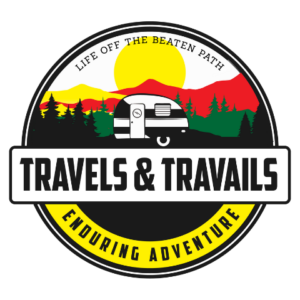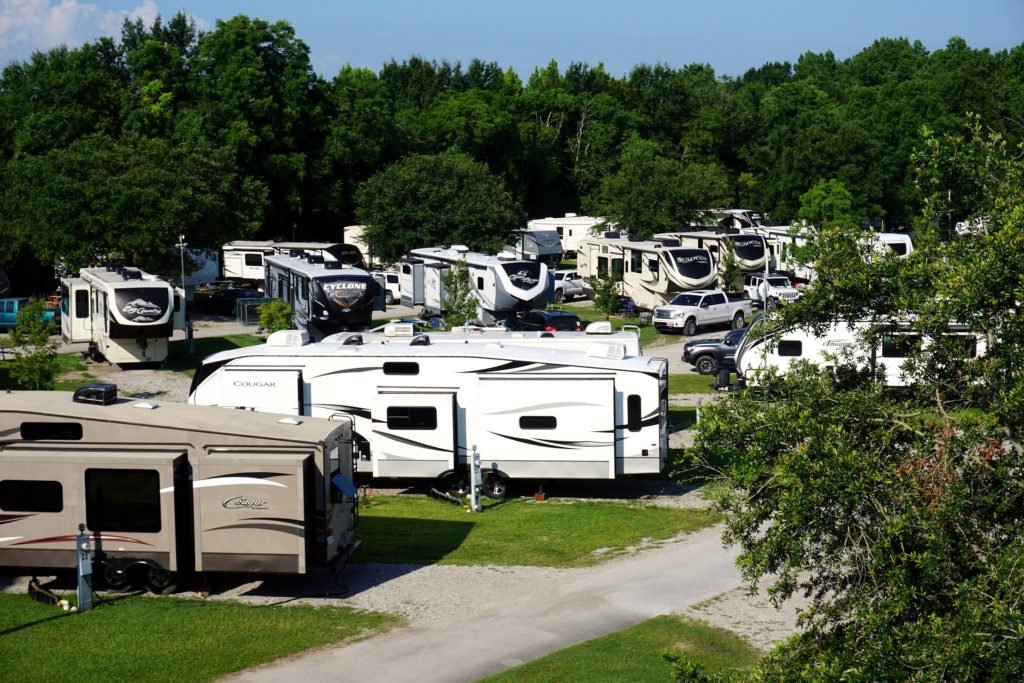
In a previous article, I talked about What To Know About Choosing A Travel Trailer. In that article, I discussed the selection criteria for choosing a trailer that is best for you and your family. Once you have figured out what you are looking for in a trailer, you’ll need to understand what to know before purchasing a travel trailer.
Here are the things you should know about before purchasing a trailer:
- Dealers
- Construction
- Brand
- Viewing
- Try Before You Buy
- New vs. Used
- Things to Check
Dealers
If you are buying a new trailer or a used trailer from a dealer, it’s important to find a reputable dealer. Word of mouth is the best option, but if you don’t know anyone who has purchased a trailer, you can always check Facebook groups or RV forums. There are many Facebook groups and RV forums for travel trailer brands and they have a wealth of advice. Check Google ratings for RV dealers in your area, paying special attention to the most recent comments. Look at the Facebook reviews to see what people are saying on the Facebook page. Visit each dealership for the RV that you are interested in. Listen to what people on the sales floor are saying.
Count the number of service bays and compare it to the number of salespeople available. The best ratio of service bays to salespeople is a one-to-one ratio. That’s an indicator that the dealership is just as service-oriented as they are sales oriented. Notice how many of last-year’s models are on the lot. If there are many last-year’s models this may be an indicator that the RVs are priced too high and people aren’t buying from this dealer.
Construction
Most all travel trailers are constructed on a steel-framed chassis. However, there are several different types of trailer wall construction techniques:
- Wood-Framed Aluminum
- Aluminum-Framed Fiberglass
- Aluminum-Framed Aluminum
- Molded Fiberglass
Wood-Framed Aluminum
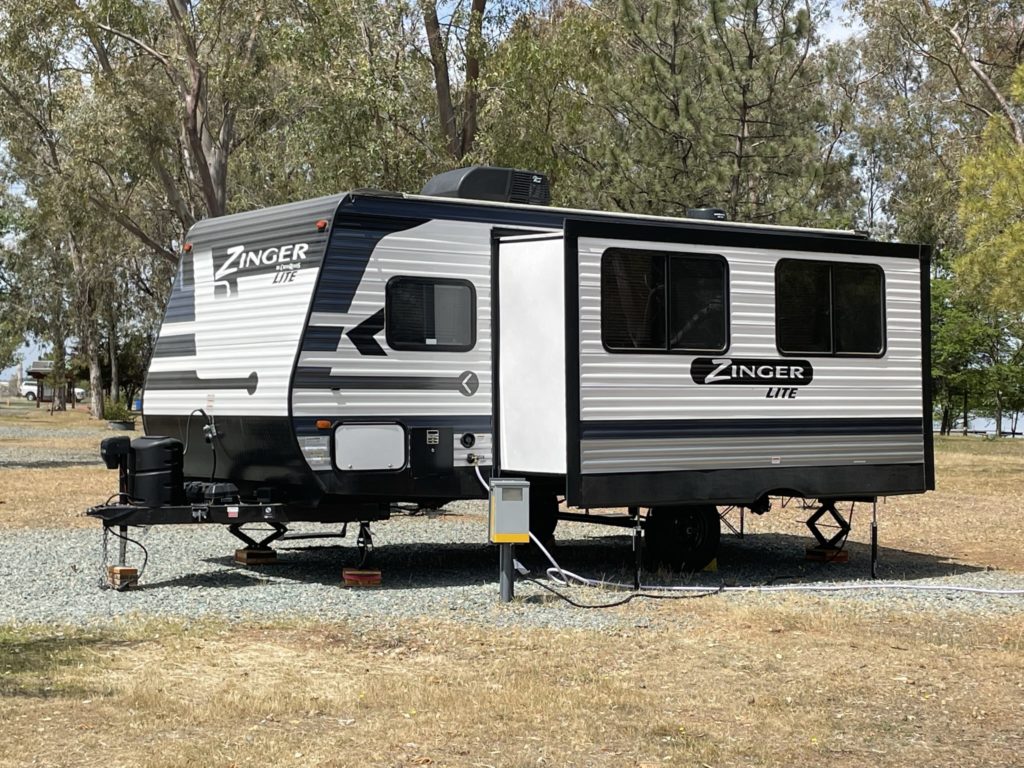
Wood-framed aluminum has the advantage of being the least expensive type of travel trailer construction. The wood framing is heavier than aluminum framing and more susceptible to water damage than aluminum framing. Wood framing can be screwed, nailed or stapled. The least expensive method of attaching the framing is stapling. This is also the least durable method of construction. As you would imaging screwed framing is the best option among the three construction methods.
Aluminum siding has an advantage over fiberglass siding in that, in the event of water intrusion, it will not separate. The disadvantage to aluminum siding is that it dings and dents fairly easily. However, if the siding is dinged or dented, you can replace the damaged panel(s).
Insulation for this type of trailer is generally roll-out fiberglass insulation. Fiberglass insulation is best for fair weather camping. It degrades over time and is susceptible to water damage and mold.
Aluminum-Framed Fiberglass
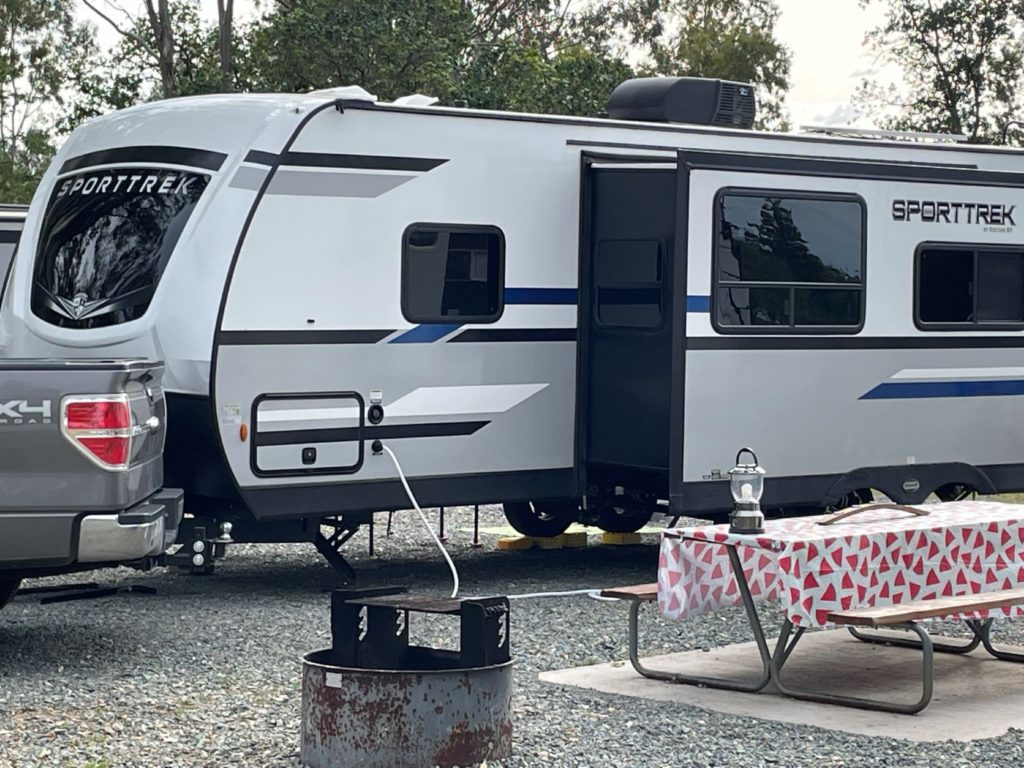
Higher-end travel trailers have an aluminum frame with a fiberglass exterior. While it’s a little less flexible, aluminum construction has the advantage of being more durable than wood framing, since it will never rot. Most aluminum framing is welded.
Aluminum frames radiate heat quickly. This can make your trailer feel colder in the winter. The heat radiation in cold temperatures can also cause the aluminum to sweat when your trailer is warm inside. Sweating can cause water damage to trailer walls and floors. This can be a problem in travel trailers that use fiberglass insulation. Heat radiation and sweating can be reduced when the aluminum frame is inset into block foam. For example, insulation for higher end trailers, like Lance Trailers have the frame inset into rigid foam-block insulation. This helps insulate the aluminum to reduce sweating.
Fiberglass exterior is more durable than aluminum exterior. It is also easier to keep clean. As I mentioned, if it does get damaged, it will be more challenging and more expensive to repair.
Aluminum-Framed Aluminum

When you think about an aluminum-framed aluminum exterior trailer, an Airstream would be the first to come to mind. Airstream has been around longer than any aluminum-framed aluminum exterior trailer with good reason. Airstream is known as being one of the highest-quality travel trailers on the market.
Airstream uses an aircraft grade aluminum exterior coated with a corrosion-resistant protective sealant. The frame is aluminum as well.
Airstream trailers are insulated with an EcoBatt insulation. EcoBatt is formaldehyde free and environmentally friendly and has thermo and insulate properties. It’s made, partially, from recycled glass bottles and sand. Some owners have reported that the walls of their Airstream trailers are cold.
Still, Airstream is not the only aluminum-framed aluminum exterior trailer on the market. Nope. Move over Airstream, the Living Vehicle is about to steal your show. The Living Vehicle is a high-end trailer designed for full-time or extended use off-grid. Frankly, if you pay that much money for a trailer, you’ll probably want to live in it. The Living Vehicle has an aluminum skin, aluminum framing, aluminum sub-floor, and an aluminum chassis. Unlike the Airstream, the Living Vehicle uses R-13 closed-cell foam in the construction of it’s trailers.
While these types of trailers are beautiful, they do have set-backs. One downside of exterior aluminum panels is that, if they are dented, the whole panel must be replaced. Replacing an aluminum panel is a technical repair that must be done by someone who has experience with this type of repair. It’s also very expensive.
Molded Fiberglass
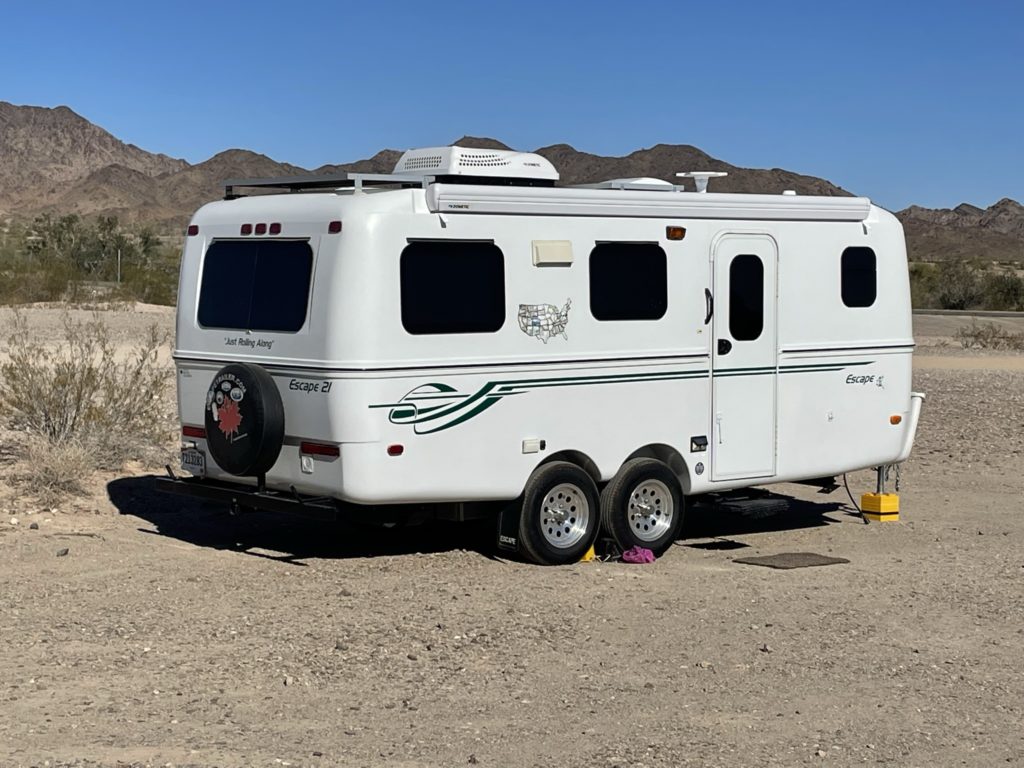
To create a molded fiberglass trailer, fiberglass reinforced resin plastics are formed into a predetermined shape. The manufacturer first makes a mold and then uses the mold to make the fiberglass shell to make this shape into the trailer body. In this process two separate parts are molded together then sealed with a band in the middle or top of the trailer. Most trailers have a top and a bottom mold, but some have a left or a right mold.
Molded fiberglass trailers have an advantage in that they are aerodynamic, easy to tow, durable, and more water resistant than conventionally-built trailers. If molded fiberglass is damaged it is relatively inexpensive to fix. One downside of molded-fiberglass trailers is that the largest size you can purchase is around 25 feet.
Different manufacturers use different techniques to insulate molded-fiberglass trailers. Both Casita and Scamp have taken a simple approach to insulation. While the Casita has carpet insulation on the walls, Scamp has a fabric-type insulation. Both types of insulation reduce condensation, increase heat/cold retention, and decrease exterior noise.
Other molded fiberglass trailers, like the Escape trailer have different construction techniques than Casita and Scamp trailers. While Scamp and Casita are held together with rivets, the Escape trailer is connected with anchor blocks that are attached to points on the interior shell. This technique is much stronger than rivets, which will break under torque.
Instead of carpet, the Escape trailer uses 3/8” closed cell foam with an additional 1/2″ of polyethylene foam; which helps keep the trailer warm in the winter and cool in the summer.
Curious if Escape is better than Casita? Click here.
Oliver trailer is a high-end molded-fiberglass trailer that uses a different technique. Oliver trailers are build with both an inner and outer shell. So that’s four pieces of molded fiberglass; two for the top and two for the bottom. Polyethylene foil-coated insulation is placed between the inner and outer shell to provide excellent insulative properties.
Brand
Another consideration in purchasing a travel trailer is trailer brand. Once you discover a floor plan that you prefer, check to see which brands have the floor plan you love. Every year RV magazine polls readers to find discover their favorite trailer. In 2020, RV magazine readers voted for the Lance Travel Trailer for the gold award, Grand Design for the silver award, and Airstream for the bronze award. In 2021, RVDA bestowed their “Quality Circle Award” on the following towables:
“Airstream; Alliance RV (Paradigm, Valor); CrossRoads RV (Zinger, Volante); Cruiser RV (Shadow Cruiser, MPG, Radiance, Embrace, Stryker); East to West (Alta, Della Terra); Forest River (Flagstaff travel trailers, fifth wheels and Shamrock expandables); Grand Design (Imagine, Momentum, Reflection, Solitude, Transcend); Gulf Stream Coach (Innsbruck, Amerilite, Conquest, Kingsport); Heartland RV (Milestone, Elk Ridge, Big Country); Highland Ridge RV; Intech RV (Flyer, Luna, Sol, Terra); Keystone RV (Alpine, Avalanche, Cougar, Montana, High Country, Raptor, Carbon); KZ RV (Durango, Durango Gold, Venom, V-Series, Sportsmen, Sportsmen Sportster, Sportsmen Classic); Lance Camper (truck campers); Venture RV (SportTrek, Sonic, Status), and Winnebago.”
This is a great place to start. In addition, check forums and Facebook groups for the trailer manufacturers you are interested in. People in these groups tend to be quite honest about issues that they’ve had with their trailers.
Viewing
Once you’ve done your research, it’s time to go look at trailers. One of the best places to see a wide variety of travel trailers is at an RV show. Plus, RV shows often have great deals on trailer that are for sale. When you’re in the trailer, be sure to sit on the benches, the toilet, and lay on the bed (please take your shoes off). Open the cabinets and the refrigerator. Imagine yourself in the trailer. Look for defects. A couple that we know purchased a brand new trailer and the workmanship was awful. The trim pieces didn’t line up, the wall paper was bubbled, the doors weren’t square, and the gimp wasn’t properly installed. And these were just the things you could see!
Try Before You Buy
There are many rental companies on the market. It always pays to rent the type of trailer that you are thinking about buying whenever possible. Companies like Outdoorsy, RVShare or Good Sam RV rentals have a wide variety of travel trailers for rent. It’s a great time to see how you would actually use the trailer.
New vs. Used
A new travel trailer may seem like a better buy as far as quality is concerned, but, keep in mind that build quality on a new travel trailer is not the same as a new car. This issue has been exacerbated by the demand for RVs caused by the pandemic – builders are attempting to produce more trailers with fewer workers and less access to parts. You do have the assurance of the warranty, however, keep in mind that repair times for warranty related items can be up to six months. That means that, if your refrigerator on your new trailer is not working properly, you may be camping without a refrigerator for up to six months.
Prices vary from dealer to dealer so be sure to shop around. Websites like RV trader and ? will give you an idea about prices in your area. Unlike automobiles, MSRP is not an accurate indication of the price that you’re likely to pay. MSRP is normally much higher than the sales price of the trailer.
In most cases, a used travel trailer will be less expensive than a new travel trailer. If you buy from a private party, a used trailer will have a history that can be told by the previous owner. I’ve found most travel trailer owners to be honest, but, of course, there is always the rare exception.
Things to Check
Here are some things to check when purchasing a travel trailer:
- Check the trailer for cleanliness and upkeep
- Check the roof for leaks
- Check the roof caulking for age/damage/leaks/cracks
- Check the ceiling for water damage and buckling; new paint can hide damage
- Check the walls and floor (especially corners) for water damage (mushy, wavy, stained)
- Look inside every cabinet for improper fittings, water damage or leaks (bring a flashlight)
- Make sure every electrical and plumbing fixture works
- Check the floor for imperfections; is it spongy or irregular?
- If the flooring was recently replaced on a used trailer or were the walls painted? Find out why
- Check underneath the trailer for water damage to the subfloor
- Check every window for water damage
- Try the propane stove and heater (and possibly the refrigerator); make sure they work and you don’t smell a leak
- Check the canvas of pop up or hybrid trailers for mold damage
- Make sure you have the proper size hitch for the trailer ball and trailer connector before picking up the trailer
- Check the exterior for damage or repairs
- If the trailer has slides, inspect the slides for damage
- Check the tire tread and date code
- Check the axle, frame and leaf springs
For more detailed information, check out Common Problems with Travel Trailers.
Is Buying a Travel Trailer Worth It?
The easiest and least expensive way to get on the road is with a travel trailer. In fact, rvia.org reported that 279,470 travel trailers were shipped in the US in 2021, making up about 56% of all RVs sold that year. Camping in a travel trailer, either by yourself, or with a partner or family will give you years of joy to come.
